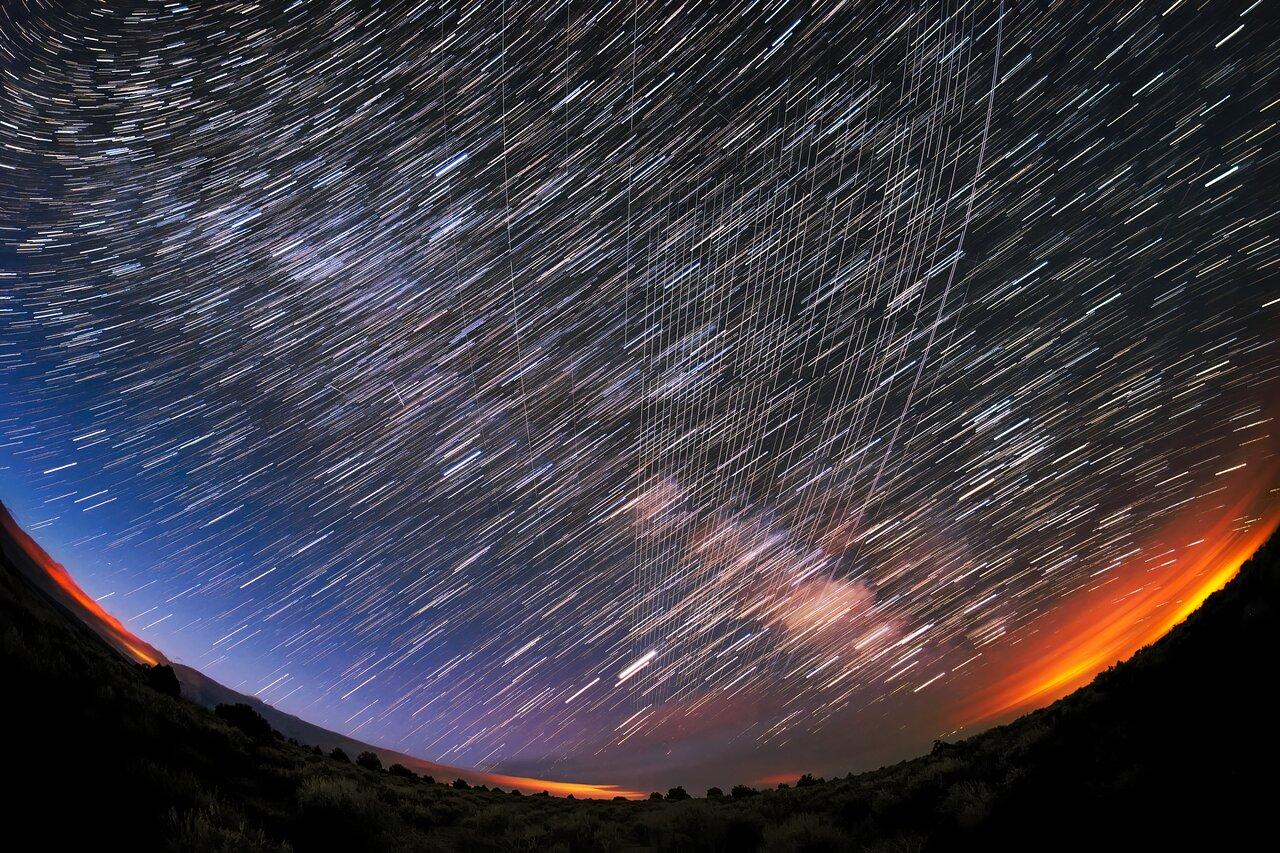SKAO teams up with NSF’s NOIRLab to co-host international centre protecting astronomy from satellite interference

The SKA Observatory (SKAO) has been selected, along with NSF’s NOIRLab, to co-host a new centre that aims to mitigate the impact of satellites on astronomical observations.
The International Astronomical Union (IAU) signed a memorandum of understanding with the two co-hosts on 2 February 2022 enacting the creation of a Centre for the Protection of the Dark and Quiet Sky from Satellite Interference. The Centre will coordinate international efforts and work across jurisdictions to help mitigate the negative impact of satellite constellations on ground-based optical and radio astronomy observations as well as humanity’s enjoyment of the night sky. The SKAO will focus on radio interference while NOIRLab will be focusing on optical and infrared interference.
“We’re proud to join forces with NOIRLab and work with professional astronomers, industry, regulators, and the wider community on behalf of the IAU,” said the SKAO Director-General, Prof. Philip Diamond. “The sky is a limited resource that belongs to all. As the intergovernmental organisation for radio astronomy, the SKAO is well placed to play a big role in tackling the impact of technology on its shared use. Since the acceleration of satellite launches, we’ve been working with industry and the astronomy community to address our concerns, and this Centre is a natural continuation of our work.”
Possible mitigations already identified
While satellite interference is not a new issue for ground-based observations, the launch of large numbers of satellites in low Earth orbit to provide broadband services increases that risk exponentially. Since such satellite constellations impede observations across borders, solutions must be found at the international level.
The Centre will build on the work carried out by the two host institutions and more generally the astronomy community, recognising the various interests of different observatories according to wavelength, existing regulations, and expected impact. By quantifying the potential impact on its radio telescopes in a preliminary study, the SKAO has already identified possible mitigations to reduce the loss of sensitivity that would affect some of its observations.
The Centre will work across several key areas, including:
- Facilitating calibrated observations of satellite constellations;
- Maintaining links and engaging in discussions with industry;
- Suggesting technical mitigations for spacecraft design and constellations’ operation;
- Fostering academic research on hardware mitigation techniques;
- Interfacing with space agencies and telescope networks to obtain orbital parameters of low earth orbit commercial communication satellites; and
- Supporting the development of new software tools to mitigate constellation impacts.
To achieve this, the virtual Centre will initially employ seven full-time-equivalent staff members across its two locations: NSF’s NOIRLab’s headquarters in Tucson, Arizona, USA, and SKAO’s headquarters at Jodrell Bank, UK. Their work will be supported by members of the community contributing to the activities of the Centre.
Over 75 letters of support
The joint proposal received over 75 letters of support from the astronomy community including institutions* and influential astronomers, commending the SKAO and NSF’s NOIRLab’s “world-leading expertise in radio and optical astronomy” as well as their “track record of rigorous analysis of the impact of satellite constellations on ground- and space-based astronomy”.
Headed by a former IAU General Secretary, Prof. Piero Benvenuti from the University of Padova, the Centre’s co-directors will be Dr Connie Walker (NSF’s NOIRLab) and Federico Di Vruno (SKAO).
Hosting the new Centre ties in closely with the SKAO being granted Permanent Observership status on the United Nations’ Committee on the Peaceful Uses of Outer Space (COPUOS), which will allow it to contribute to the Committee’s work. COPUOS governs the use of space for the benefit of all humanity, and is tasked with reviewing international cooperation in peaceful uses of outer space and studying legal problems arising from the exploration of outer space, among other matters.
Dr Debra Elmegreen, IAU President, noted: “The new Centre is an important step towards ensuring that technological advances do not inadvertently impede our study and enjoyment of the sky. I am confident that the Centre co-hosts can facilitate global coordination and bring together the necessary expertise from many sectors for this vital effort.”
Read the press release from the International Astronomical Union here and the one from NSF’s NOIRLab here.
* Institutional Contributors to the new Centre: ASTRON (Netherlands), Bulgarian Astronomical Society, Chilean Astronomical Society (SOCHIAS), Committee on Space Research (COSPAR), University of Washington/Institute for Data Intensive Research in Astrophysics & Cosmology (DiRAC), Commonwealth Scientific and Industrial Research Organisation (CSIRO–Australia), European Astronomical Society (EAS), European Science Foundation Expert Committee on Radio Astronomy Frequencies (CRAF), European Southern Observatory (ESO), Instituto de Astronomía Teórica y Experimental/Observatorio Astronómico de Córdoba, International Dark-Sky Association, Italian Astronomical Society (SAIt), Jodrell Bank Centre for Astrophysics (UK), Las Cumbres Observatory, L’Istituto Nazionale di Astrofisica (INAF–Italy), Max Planck Institute for Radio Astronomy, National Astronomical Data Centre of China, National Astronomy Observatory of China (NAOC)/Center for Astronomical Mega-Science (CAMS), National Centre for Radio Astronomy (NCRA–India), Opticon-Radionet Pilot (ORP) Oukaimeden observatory, Royal Astronomical Society (RAS–UK), South African Radio Astronomy Observatory (SARAO), SpaceAble, Turkish Astronomical Society, Ukrainian Astronomical Society, University of Arizona, University of Illinois at Urbana-Champaign (UIUC), University of Leicester, and Yebes Observatory (Spain).




